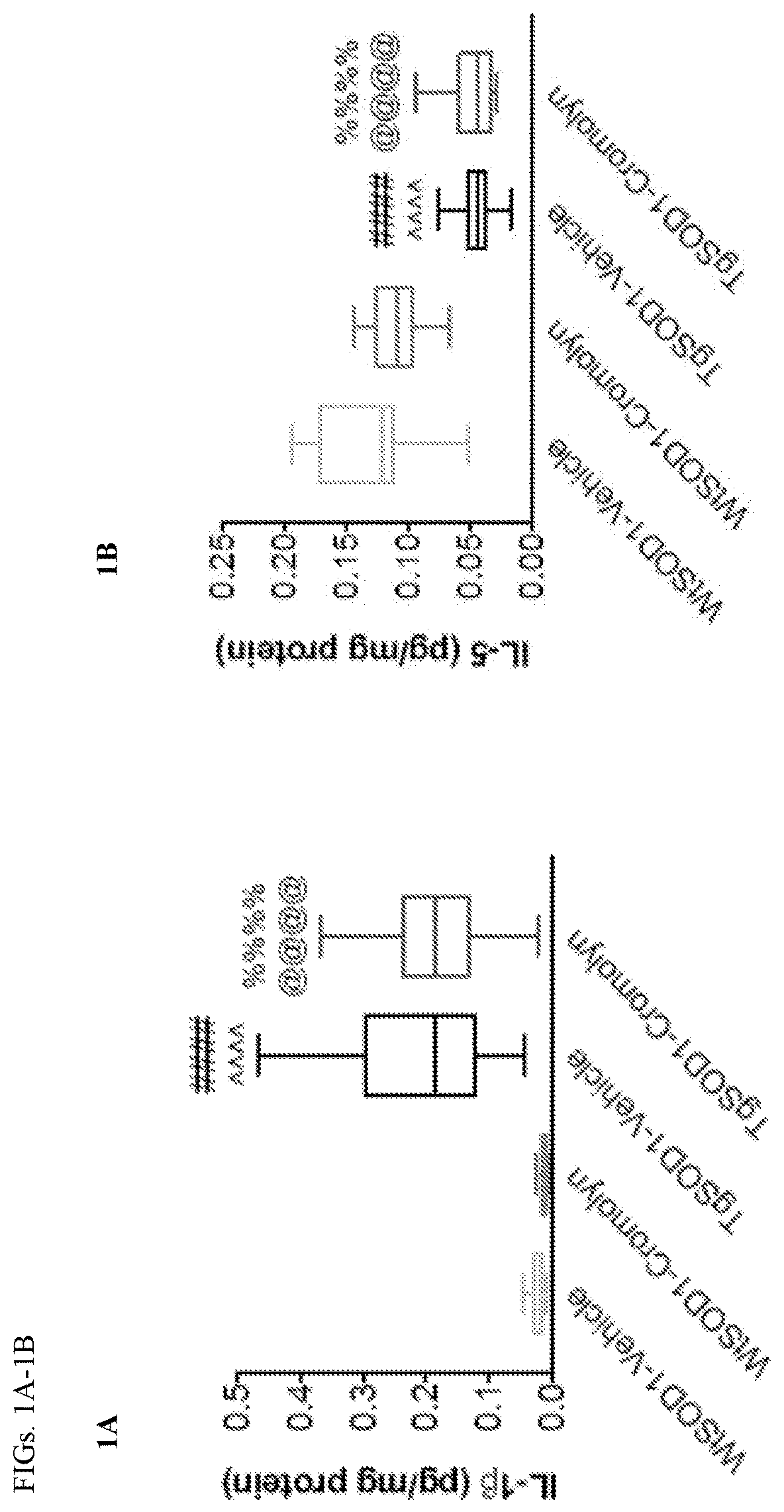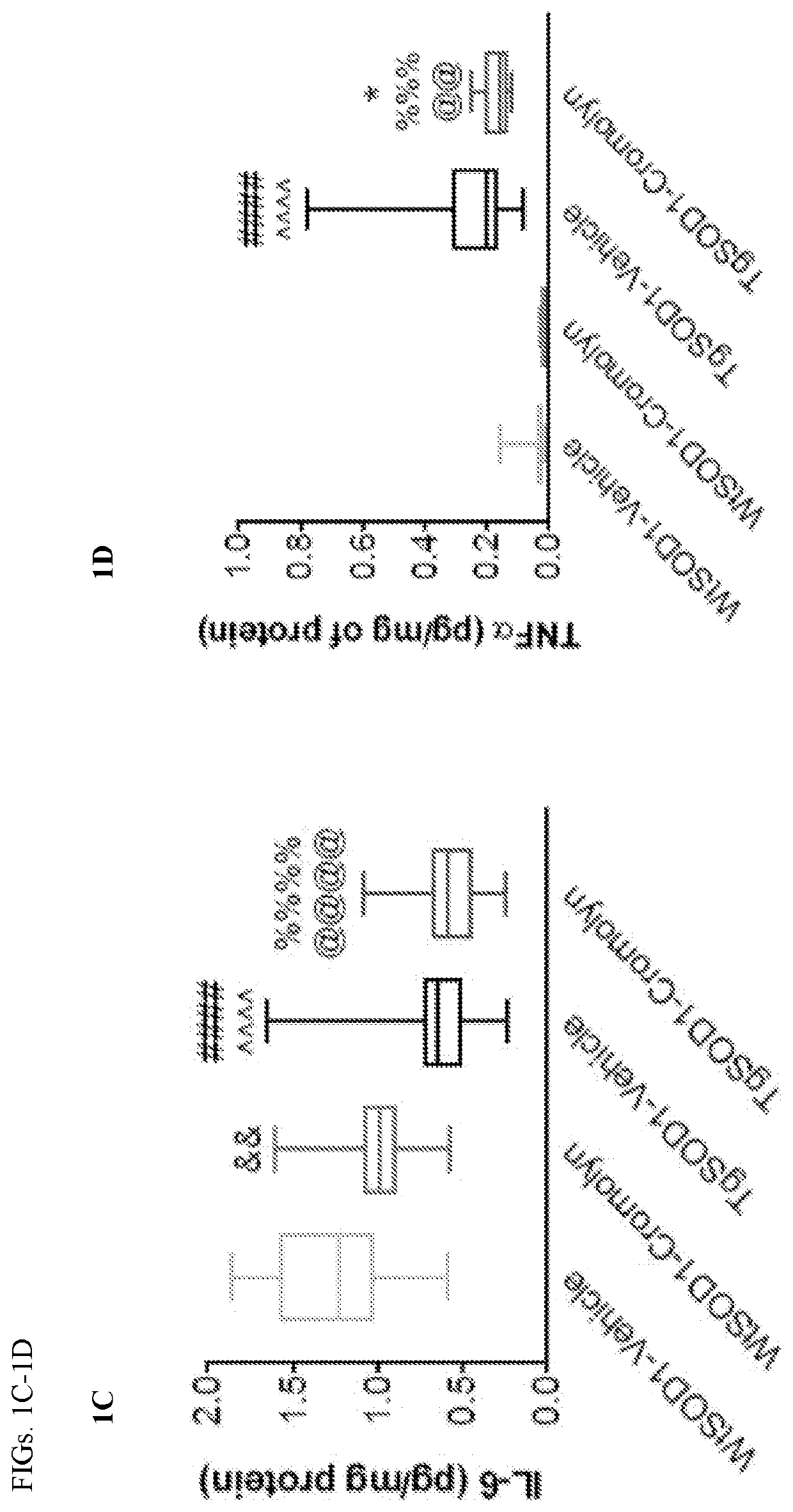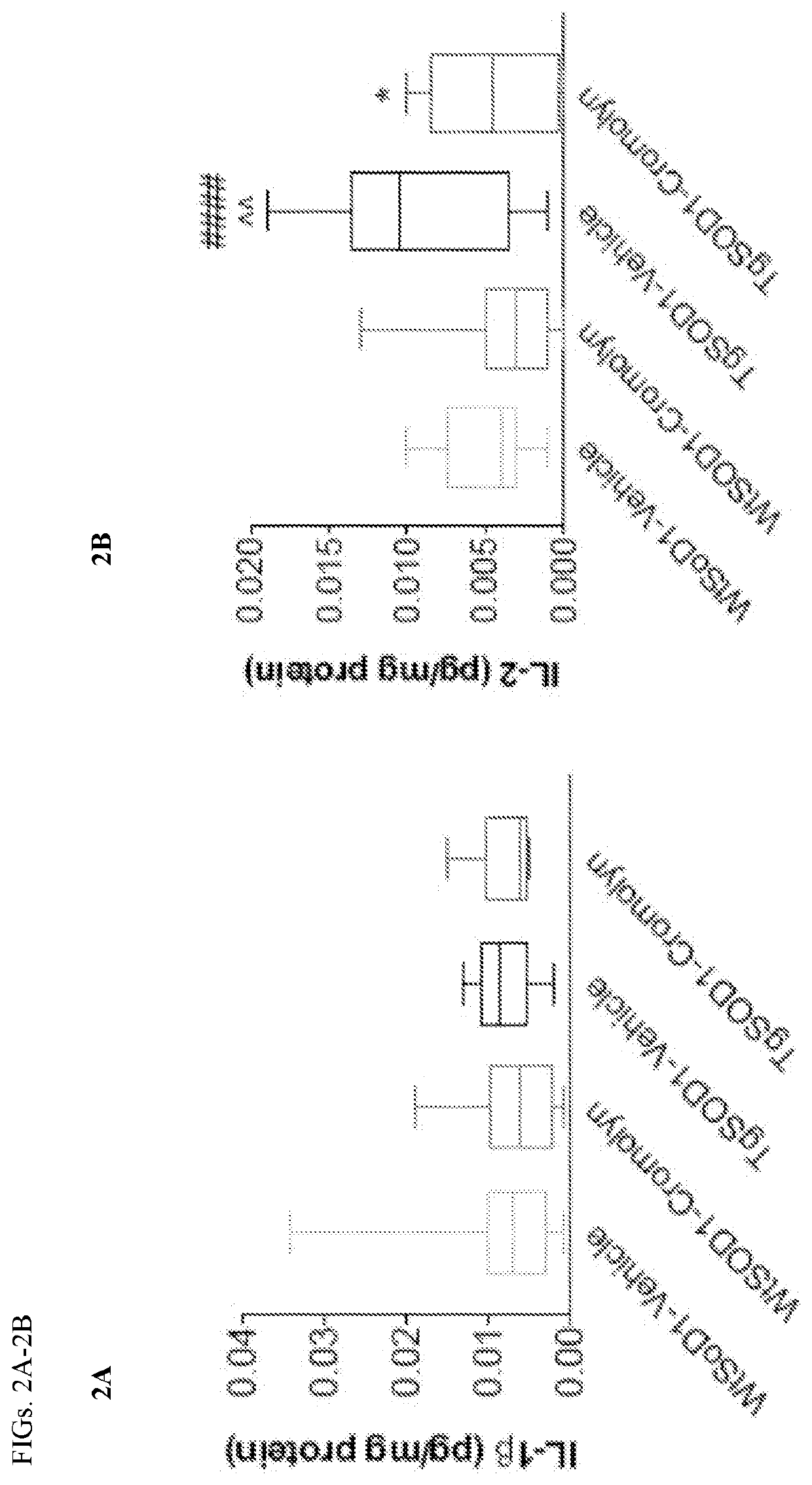Methods of treating cytokine release syndrome
a cytokine release and syndrome technology, applied in the field of methods of treating cytokine release syndrome, can solve the problems of severe side effects, cell hyperactivity, cell destruction, immunosuppression, etc., and achieve the effects of requiring extensive emergent treatment, severe side effects, and severe side effects
- Summary
- Abstract
- Description
- Claims
- Application Information
AI Technical Summary
Benefits of technology
Problems solved by technology
Method used
Image
Examples
example 1
Cromolvn Treatment Decreases the Levels of Pro-Inflammatory Cytokines in Plasma of TgSOD1 Mice
Chemicals
[0140]Cromolyn. sodium was provide by AZ Therapies and dissolved in PBS. 100 mM solution was used for in vivo experiments. Dulbecco's PBS was used to dilute the solution for intraperitoneal injections for a final dose of 6.3 mg / kg.
Animals
[0141]149 male and female age- and litter-matched transgenic TgSOD1G93A and wild-type WtSOD1G93A mice were used with the following breakdown: Females (19 WtSOD1-Vehicle, 17 WtSOD1-Cromolyn, 19 TgSOD1-Vehicle, and 17 TgSOD1-Cromolyn) and Males (18 WtSOD1-Vehicle, 21 WtSOD1-Cromolyn, 21 TgSOD1-Vehicle, 17 TgSOD1-Cromolyn). The mice received once daily injections of either vehicle or cromolyn sodium (6.3 mg / kg, 96 i.p.) 5 days per week starting at P60 until euthanasia.
[0142]All animal care, husbandry and experimentation were performed according to the guidelines set by the Massachusetts General Hospital Subcommittee on Research Animal Care. These expe...
example 2
Cromolyn Reverses Pro-Inflammatory CD33-Mediated Inhibition of M1-Microglial Activation Stage in APP / PS1 Mice
[0150]Procedure
[0151]Naive BV2 microglial cells were treated with DMSO (control) or cromolyn (500 μM) for 16 hours. Afterwards, the cells were incubated with fluoresceraly-labeled A1342 (red) and DMSO or cromolyn for 2 hours. After incubation, the cells were labeled with a plasma membrane dye (PM, green) and imaged. BV2 microglial cells or BV2 cells stably expressing CD33 (BV2-CD33wT) were treated with DMSO or different concentrations of cromolyn for 16 hours. Then, cells were incubated with soluble untagged Aβ42 and DMSO or cromolyn for 2 hours and collected for ELBA analysis. Both naive BV2 and BV2-CD33wT microglial cells treated with cromolyn exhibited increased Aβ42 uptake levels in comparison to cells treated with the vehicle (DMSO).
[0152]Results
[0153]Interaction of microglia with fibrillar amyloid-1 peptide (Aβ) leads to their phenotypic activation and has recently been...
example 3
Gene Expression of IL-1β and IL-6 in N9 Microglia Cell Line Stimulated with LPS and Treated with Cromolyn
[0157]N9 microglia cells were pretreated with different concentrations of cromolyn (15 μg / ml, 30 μg / ml, and 60 μg / ml) for 6 firs and then stimulated with 500 ng / ml lipopolysaccharide (LPS, most commonly used pro-inflammatory stimulus for microglia) in the presence of cromolyn for 8 hrs. Cells was harvested and RNA was isolated with TRUOL (Invitrogen), and first strand cDNA was synthesized using 2 μg of RNA and High-Capacity Reverse Transcriptase (Invitrogen). RT-PCR was performed with SYBR Green PCR reagents on a Bio-Rad detection system. RNA levels were normalized to the level of GAPDH and calculated as delta-delta threshold cycle (ΔΔCT). Primers used for RT-PCR are listed as follows: GAPDH-For: AGCCACATCGCTCAGACAC (SEQ ID NO: 3), GAPDH-Rev: GCCCAATACGACCAAATCC (SEQ ID NO: 4); IL-1β-For; CGCTCAGGGTCACAAGAAAC (SEQ ID NO: 5), IL-1β-Rev: GAGGCAAGGAGGAAAACACA (SEQ ID NO: 6); IL-6-Fo...
PUM
| Property | Measurement | Unit |
|---|---|---|
| concentrations | aaaaa | aaaaa |
| concentrations | aaaaa | aaaaa |
| concentrations | aaaaa | aaaaa |
Abstract
Description
Claims
Application Information
 Login to View More
Login to View More - R&D
- Intellectual Property
- Life Sciences
- Materials
- Tech Scout
- Unparalleled Data Quality
- Higher Quality Content
- 60% Fewer Hallucinations
Browse by: Latest US Patents, China's latest patents, Technical Efficacy Thesaurus, Application Domain, Technology Topic, Popular Technical Reports.
© 2025 PatSnap. All rights reserved.Legal|Privacy policy|Modern Slavery Act Transparency Statement|Sitemap|About US| Contact US: help@patsnap.com



